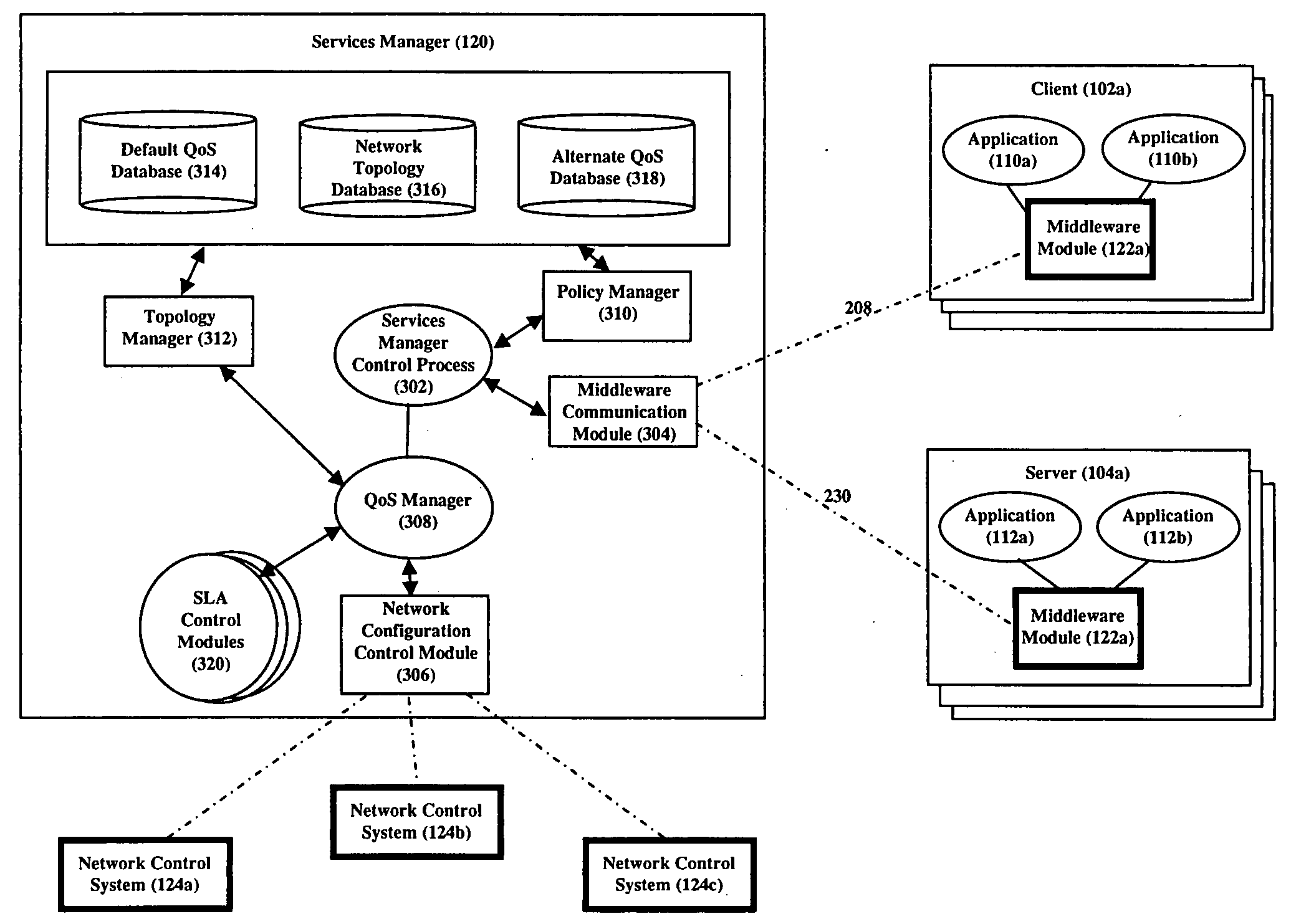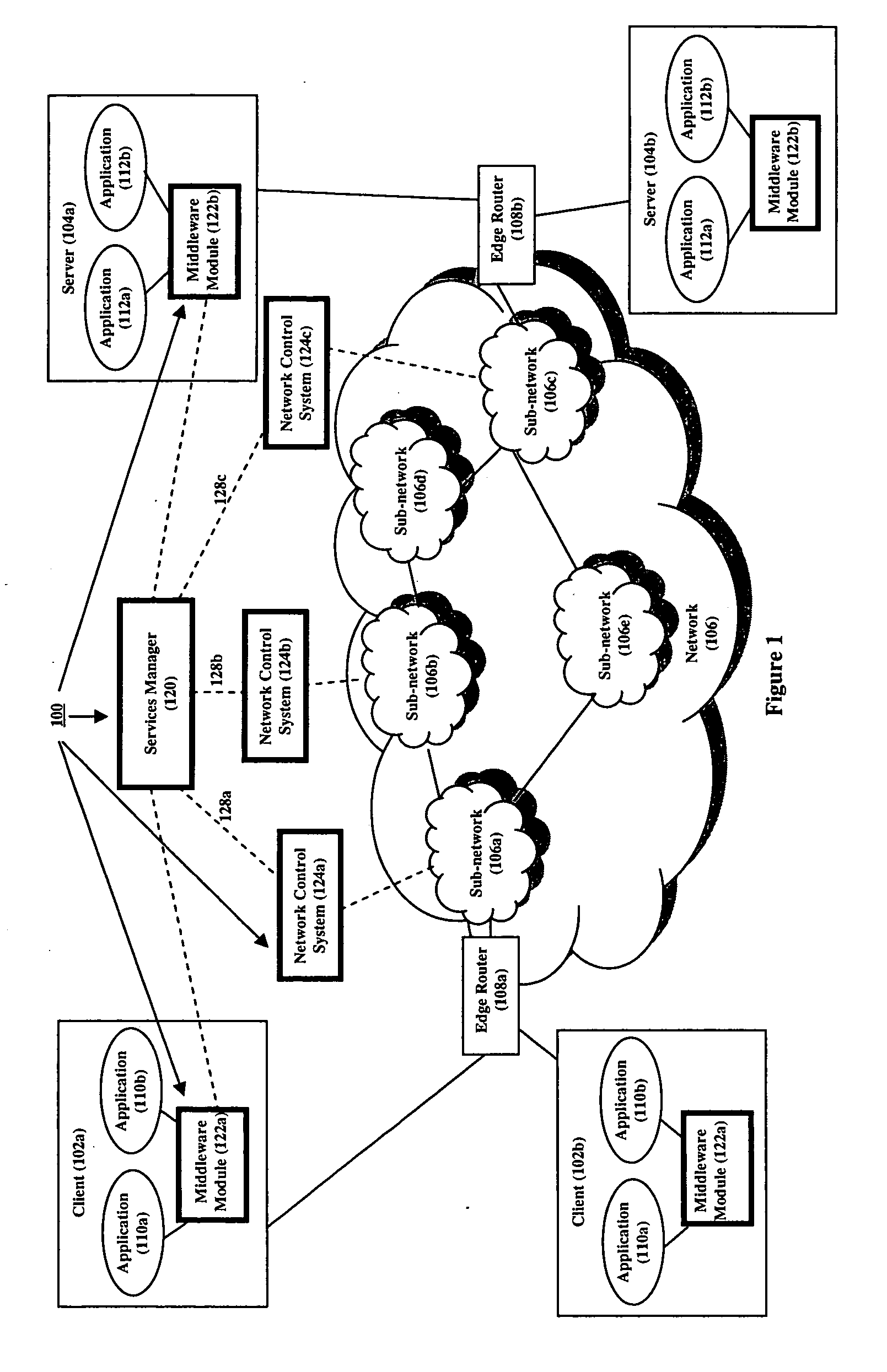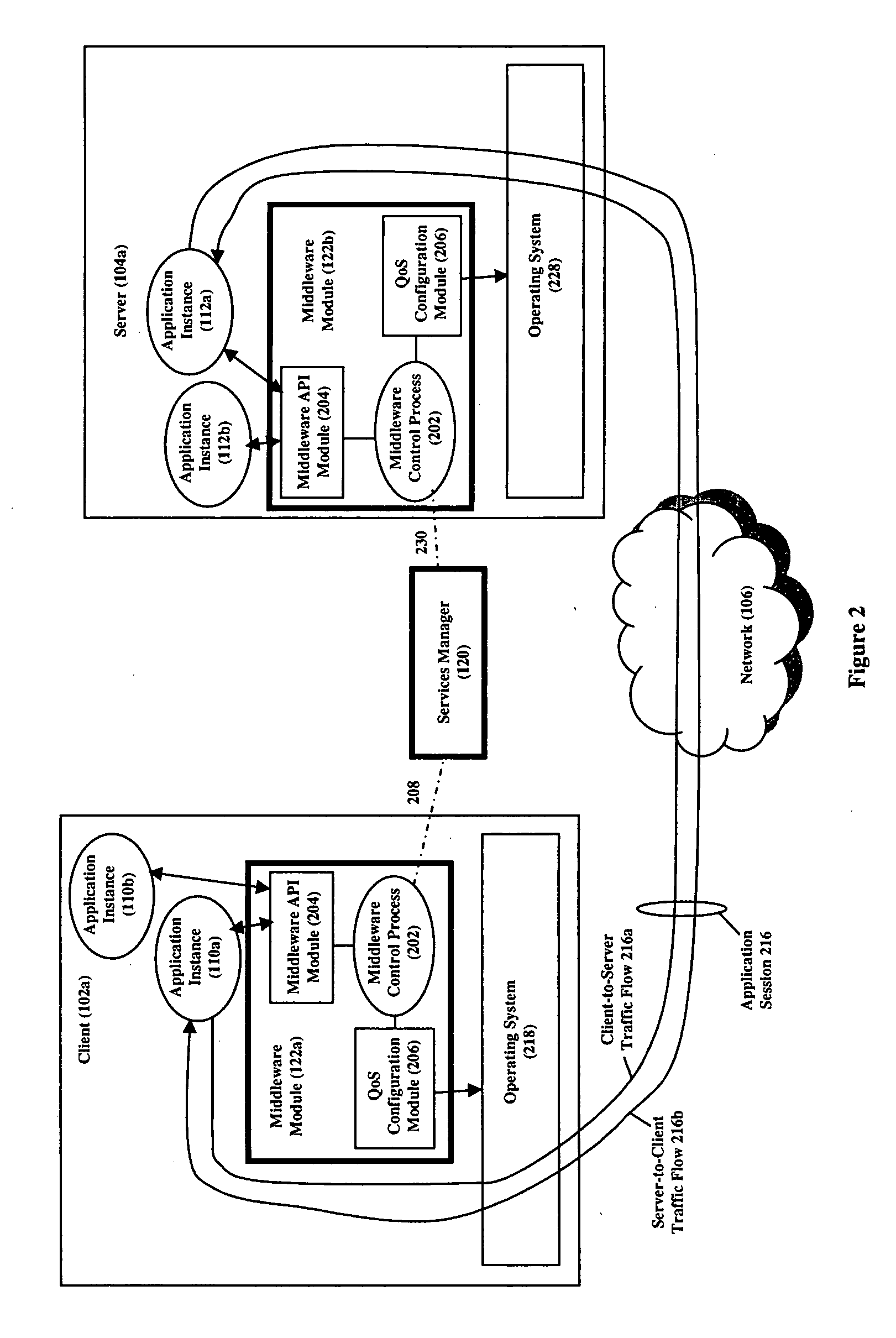Scalable and dynamic quality of service control
- Summary
- Abstract
- Description
- Claims
- Application Information
AI Technical Summary
Benefits of technology
Problems solved by technology
Method used
Image
Examples
first embodiment
[0032]FIG. 1 is a high-level illustrative diagram of system 100 of our invention that provisions end-to-end QoS services on a per application traffic flow basis. Specifically, system 100 allows an application to dynamically, automatically, and flexibly request that the traffic flow(s) of a given session generated by the application be assigned QoS services and then provisions the assignment, freeing the application from the details of this provisioning. System 100 comprises a services manager 120, a middleware module 122a and 122b at client computers (102) and server computers (104) respectively, and one or more network control systems 124a-c.
[0033] As FIG. 1 shows, system 100 applies to an environment comprising a plurality of client computers 102a-b and server computers 104a-b interconnected by a network 106 through a set of edge routers 108a-b. (Note that the client and server computers are hereinafter generically referred to as hosts.) Each client and server site comprises one ...
second embodiment
[0069] As an example of this second embodiment, consider client 402 and server 404. Here, client 402 comprises a middleware module 122 and server 404 comprises a policy enforcement module 420. Assume that application 410 at client 402 and application 412 at server 404 have an application session with client-to-server and server-to-client flows. Application 410 can make a QoS provisioning request for the client-to-server flow, with the middleware module 122 relaying the request to the services manager 422 and with the middleware module also configuring the client 402 with the obtained DSCP value for packet marking, as described above. However, application 410 can also make QoS provisioning requests for the server-to-client flow. Here, application 410 again makes a QoS provisioning request, which the middleware module 122 relaying the request to the services manager 422. Similar to above, the services manager determines traffic attributes for the flow, determines the sub-networks the ...
third embodiment
[0076]FIG. 6 is an exemplary configuration of the third embodiment that illustrates the functional operation of packet shaping and packet policing. As shown, client 602 comprises a middleware module 122 and server 604 comprises a policy enforcement module 618 thereby allowing a client-based application (such as application instance 638) to establish a session (such as application session 642) to a server-based application (such as application instance 640) and to make QoS requests for client-to-server traffic flows (such as traffic flow 642a) and for server-to-client traffic flows (such as traffic flow 642b) as described above. With respect to the server-to-client flows, the policy enforcement module 618 at server 604 continues to perform the packet marking function. However, this module now also performs the packet shaping and policing function for these flows. With respect to the client-to-server flows, the middleware module 122 at the client 602 continues to perform the packet ma...
PUM
 Login to View More
Login to View More Abstract
Description
Claims
Application Information
 Login to View More
Login to View More - R&D
- Intellectual Property
- Life Sciences
- Materials
- Tech Scout
- Unparalleled Data Quality
- Higher Quality Content
- 60% Fewer Hallucinations
Browse by: Latest US Patents, China's latest patents, Technical Efficacy Thesaurus, Application Domain, Technology Topic, Popular Technical Reports.
© 2025 PatSnap. All rights reserved.Legal|Privacy policy|Modern Slavery Act Transparency Statement|Sitemap|About US| Contact US: help@patsnap.com



